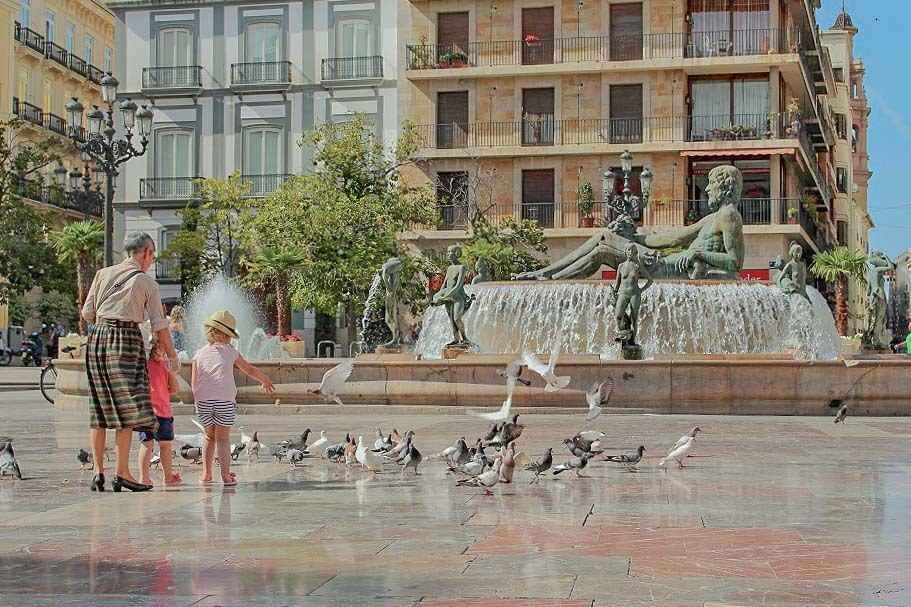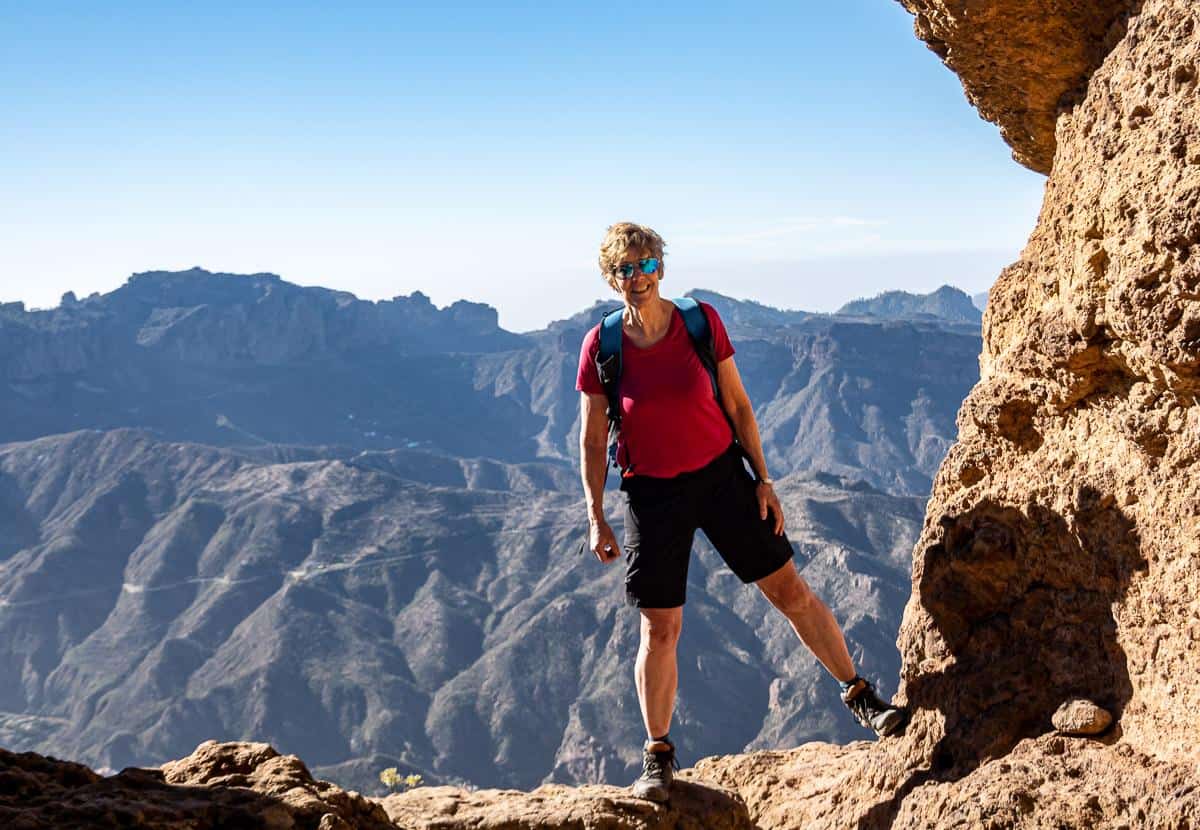Best Socks for Hiking the Camino de Santiago
6 min read
Table of Contents
Walking nine different Camino de Santiago routes the best hiking socks that we have used were all merino wool or wool blends. For long-distance walks, the right shoes are a very important item on your Camino de Santiago packing list, but to stay blister free we learned the importance of wearing the right type of socks.

Walking the first of our Camino de Santiago pilgrimage routes in running shoes and thin cotton socks my feet were an absolute mess. We both got blisters, got lots of advice from fellow pilgrims, and started experimenting with different kinds of socks. Unfortunately, there is no guaranteed way to prevent blisters, but in our experience wearing the right socks helped a lot when walking long distances.
See our Guide to the Best Shoes for Hiking the Camino de Santiago, discussing hiking shoes, trail shoes, and hiking boots in detail.
Our top sock choices for the Camino
What Causes the Appearance of Blisters?
A blister is a raised portion of skin that fills with fluid. Blisters form when layers of skin separate due to friction and pressure and fill with fluid. High temperature and moisture can intensify blistering. Doing long hikes, such as the Camino Frances, your shoes can cause friction, together with sweating can cause blisters to form. Shoes that do not fit properly, wrinkled socks, and wet feet are the main causes of blisters.
How do Socks Prevent Blisters on Long Walks?
To minimize forming of blisters, keep your feet dry and try not to have chafing in your shoes. Hiking socks are designed to prevent chafing, dry quickly, protect your feet, and wick moisture away from your feet. Good hiking socks are made of merino wool or a wool synthetic hybrid. Well-fitting socks with good padding and breathability protect your feet and prevent slipping and blistering.
Are Merino Wool Socks a Good Idea?
Merino Wool is made from a specific sheep breed called the Merino sheep. This sheep has very thin and soft fibers within its fur resulting in improved thermoregulation, moisture resistance, and odor resistance when compared with other wool.
My first pair of Merino wool socks were quite thick and I was amazed at how dry they were at the end of a 30-kilometer walk with hardly any bad odors! Some of the other types of synthetic hiking socks I hiked with, on comparable hot days, were very smelly after a long day in my hiking shoes. This amazing natural material pulls this moisture away from your skin. Merino wool can stay dry to the touch even after absorbing 30% of its weight in moisture. It is really a great thing how these socks do not get smelly. The fibers have natural antibacterial properties keeping bacteria and fungi away which results in foot issues. Merino wool fibers also have a tight microscopic structure that prevents odor-causing materials from being absorbed.

Which are the best Merino wool socks?
All Merino Wool socks are not the same. The location and age of the sheep that the wool came from make a big difference in the wool quality. It is important to buy socks made of the wool percentage that is best suited for your Camino.
Reputable manufacturers usually use better-quality merino wool. Good Socks – brands that use good quality merino wool include Darn Tough, Silverlight, Smart Wool Socks, and Danish Endurance. If you live in North America Darn Tough socks is a good brand that is easy to purchase. In Europe, we can recommend Danish Endurance for good quality socks.
Choosing the Best Socks for Your Pilgrimage
Walking any of the Camino Routes merino wool socks is an excellent way to keep your feet dry and odor free throughout the day. Very few hiking socks are 100% Merino wool, since the material is not very durable, and synthetic materials often dry quicker. This is why Merino wool is usually mixed with synthetics. For the Camino, we prefer to use socks that contain 30-60% Merino wool. These socks dry quicker and are more durable. On long Camino routes like the Camino del Norte and the Camino Frances durability is very important. Even if you walk in the summer months you will probably have some rainy days this time of the year making quick-drying socks important.
When to Buy Socks with a Higher Merino Wool Content
Merino wool socks are great for people with sweaty feet. If your feet sweat a lot, wear a sock with a higher Merino wool content (50-75%), these socks will absorb more water and stay dry even when your feet sweat.
Hiking in winter with waterproof boots and socks with 50-75% merino wool content is recommended. Even though they are less durable and water resistant; breathability, thermoregulation, insulation, and odor resistance will be better.

Choose the right type of socks
- Very long walk (Camino Frances, Camino del Norte, Via de La Plata) – Darn Tough Vermont Light Hiker Micro Crew Light Cushion (43% Merino Wool), Light and strong with a thin layer of cushioning along the base of the foot. Durable, quick dry, excellent sock.
- Very sweaty feet – go for a high Merino Wool content (63%) – Darn Tough Micro Crew Cushion Hike-Trek Merino Wool Sock, soft, breathable, high Merino wool content
- Need extra cushioning (70% Merino wool) – Smartwool Classic Mountaineer
- Wearing boots – very well-rated full-boot sock (a bit longer), great cushioning, 66% Merino, Darn Tough Vermont Men’s Merino Wool Boot Socks Full Cushion
- Looking for a pair of socks in Europe? Danish Endurance Premium Outdoor Hiking Socks (38 % Merino wool) are an excellent international option.
More information to find the perfect sock
Sock length best options – to eliminate chafing very low-cut socks are not really popular for following in the footsteps of St. James. Crew height socks are a great length, sitting right below the calf muscle. Micro-crew is a sock length made by Darn Tough socks, these socks are shorter than your typical Crew height, they sit somewhere in between your ankle and mid-calf. Boot-height socks are about an inch or 2 higher than crew socks, reaching up to just below halfway up your calf.
Fabrics – socks are usually made from a combination of materials, wool regulates temperature well, keeps your feet from getting sweaty and provides cushioning. Polyester is a synthetic material that dries quickly, insulates, wicks moisture, and wicks moisture. Nylon adds durability to the socks and can help improve drying times. Silk is a natural insulator, comfortable and lightweight, but it is not very durable. Spandex helps socks hold their shape minimizing wrinkling.
Cushioning – Light cushioning, usually relatively thin socks, with some light cushioning in key places like the heel and ball of the foot. Good for hiking in warm conditions, prioritize moisture wicking and comfort over warmth. Medium cushioning, a good amount of cushioning in important spots like the heel and ball of the foot. Good for hiking and backpacking with enough warmth for use in moderate to cold conditions. Heavy cushioning, thick warm socks, provide good cushioning, usually too warm for warm weather hikes. Can take a long time to dry.
Tips to Limit Blisters
Keep your feet dry – changing your socks at least once a day is a great way to do this. Dry your feet and put on a clean, dry pair. You can hang the first pair you were wearing from your backpack on a sunny day.
Dry your shoes – newspaper is a fantastic way to do this. If you arrive at the Albergue on the Camino de Santiago and it is raining this is your best option. Stuff as much newspaper as you can tightly into your shoes. Exchange with dry paper after a couple of hours and leave for the rest of the night. Walking the Camino Primitivo in a lot of rain worked like magic.
Apply Duct tape over dressings on particularly bad blister sites
Walking the Camino de Santiago is not easy. Having the right equipment will definitely help you to complete this amazing venture. Little things can make a big difference. The most important part of packing is definitely choosing a good backpack and hiking shoes. Great socks, taking care of your feet, and blister prevention are very important.
Please follow and like us:
Travel bloggers from South Africa






